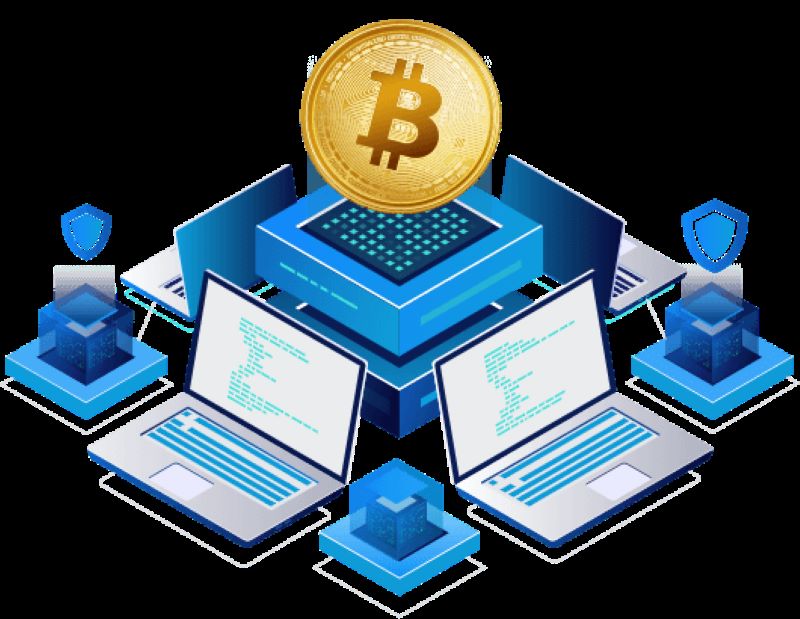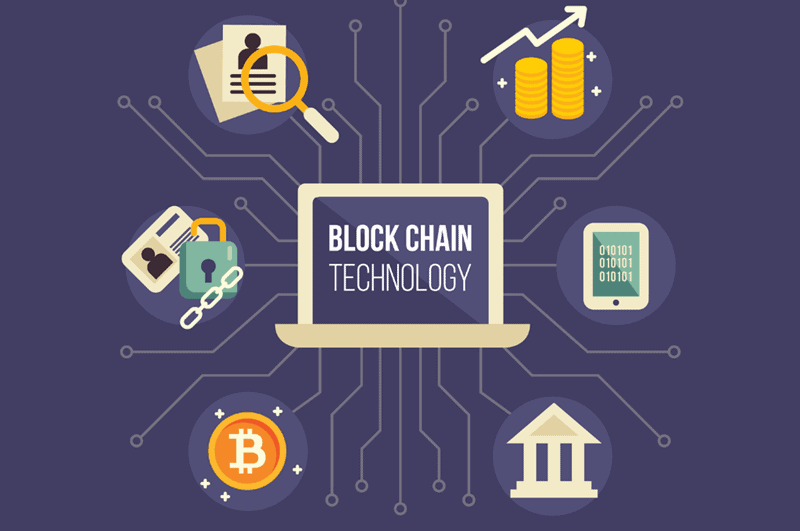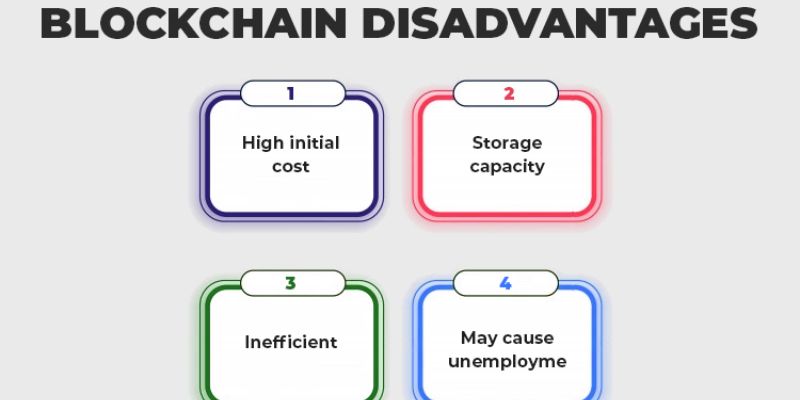Imagine a world where your academic achievements are secure and shareable in a click. That’s one of the benefits of blockchain in education. It’s changing how we handle data, keep records, and trust school systems. In this article, I’ll show you how this tech not only protects student information but makes managing credentials simple and cost-effective. Plus, we’ll see how it opens doors to better ways to learn and work together. Ready to see how? Let’s dive in.
Unlocking Potential: How Blockchain Transforms Education’s Future
Enhancing Security and Privacy in Educational Data
Implementing Educational Record Verification Using Blockchain
We are always on the move. Our info must move with us, safe and sound. Blockchain tech in schools makes this happen for student details and grades. How? By keeping a verified trail of each student’s journey. Let’s talk blockchain and diplomas.
When schools use blockchain for diploma verification, they make a promise. Your achievements are locked in, safe from any tampering. Anyone, anywhere can check your hard work with just a click. That’s powerful.
Blockchain certificates. That’s a term we’re hearing more. It means your hard work is yours. Forever. Employers can trust what they see. Fraud in education? Not on blockchain’s watch.
Let’s be clear. What savings do schools see with blockchain? They cut costs big time. Less paper shuffling, less time checking your past. That means they can focus on teaching, not endless admin tasks.
Protecting Student Information Through Decentralized Solutions
Imagine a locker for your school info that only you can open. That’s blockchain for you. Your data, your rules. Sharing your scores? Your choice.
Blockchain in higher education is changing the game. Grads carry their own records, no middlemen. Just direct, honest proof of what they can do.
And let’s not forget how this helps teachers. They can focus on guiding you, not grading you. Peer-to-peer learning on blockchain? A reality, all thanks to trust in tech.
So remember, when schools say “blockchain,” they’re saying safe, secure, and all yours.
Streamlining Academic Credentials and Record-Keeping
Advancing Academic Credentialing via Blockchain
Let’s talk about how blockchain is changing schools. This tech makes it easy to check your school records. It’s kind of like a super-safe locker for your report card. Imagine knowing no one can mess with your grades because blockchain keeps them safe. That’s what we call secure student data. Plus, when you finish school, showing your diploma is a breeze. This is what we mean by academic credentialing blockchain.
Did you ever swap stickers or baseball cards with friends? That’s a bit like how blockchain lets you share your school stuff. It’s good for when you need to prove you graduated. It’s not just about ease; it’s safer, too. Each time you do something great at school, like ace a test, blockchain adds it to your record. Think of it as a forever list of your wins, always there, always true.
Creating Immutable and Permanent Academic Records
Now, let’s dig into how blockchain makes your school wins last forever. Immutable academic records isn’t just a fancy term. It means your hard work can’t be wiped out. It’s there for good. When your teacher marks an “A” on your test, blockchain locks it in. It’s like carving your grades into a rock that lasts forever.
You might wonder why this matters. Well, for starters, it stops anyone from being sneaky with the records. Fraud prevention education is a big deal, and blockchain is like a trusty guard keeping watch. And for the grown-ups, checking if someone really graduated gets super simple. This is what we mean by blockchain for diploma verification. It’s like having a key to unlock the truth about your schooling.
With blockchain, students, schools, and job places all win. You can think of blockchain as a bridge that connects everyone with clear, true facts. Sharing academic credentials becomes as easy as handing out birthday invites. And all this without breaking a sweat over safety or who’s telling the truth.
Remember, learning never really ends. Blockchain helps you collect your learning badges over life, not just during school. So, let’s say you learn to code, fix bikes, or bake. Blockchain can add those skills to your list, too. It supports the idea of never stopping learning, which is pretty cool.
That’s how blockchain is giving education a power-up. It’s simple but super strong, keeps stuff safe, and checks it quick. It’s changing the game for everyone in school and after. From little kindergarteners to big university grads, and even teachers, blockchain tech is a win across the board.
Increasing Efficiency and Reducing Costs with Smart Contracts
Automating Educational Processes and Transactions
Smart contracts in education change how things work. They are like rules that help run things without extra help. For example, when a student finishes a course, a smart contract can give them a digital badge or a certificate right away.
These smart tools make sure schools do what they promise. They cut down mistakes and save teachers’ time. Now, teachers can spend more time teaching and less time on paperwork. It’s like having a super helper who never gets tired or makes mistakes.
Driving Cost Savings through Blockchain Deployment in Education
Using blockchain to manage school records can save money. It makes checking student data faster and cheaper. Schools don’t need to spend as much money on people to check records or on paper to print them.
Also, it stops people from making fake diplomas because blockchain keeps records safe. So, no one can change them once they’re saved. This means employers can trust the degrees more, which is good for students and schools.
And here’s a cool part: schools can use blockchain to handle money, like for tuition. Instead of waiting for checks or money transfers, blockchain can move money right away. This means schools can get paid faster and use money smarter.
In short, smart contracts cut down work and costs. They make sure schools can do more with what they have. This helps schools, teachers, and students all at the same time. And as we keep using blockchain, it’ll keep making education better and smarter.
Fostering Transparency, Collaboration, and Lifelong Learning
Establishing Transparent Grading Systems on the Blockchain
Grades show us how well we’re doing in school. Sometimes, though, mistakes can happen. It might be that uncommon times when teachers mix up scores, or when grades get changed without a good reason. That’s not fair, right? With blockchain, we can fix that. Blockchain keeps a list of grades that no one can change. This means once your grade is in the system, it stays true and clear. No mix-ups, no unfair changes.
Blockchain helps you trust that your hard work gets the right score. This is because blockchain is like a math whiz that checks our work. It can’t be tricked or messed up.
Promoting Decentralized Educational Platforms and Personalized Learning Paths
Now let’s talk about your learning journey. We all learn in our own way, at our own speed. Imagine having a learning path made just for you. Blockchain lets schools do that. This tech gives you a special key that opens your learning path. You can pick what you want to learn and go at your pace. Teachers can see your path and help you grow.
The cool part is, with blockchain, you’re the boss of your learning key. No one else can take it or change your path. It’s safe and sound with you.
Schools are like puzzle pieces spread out everywhere. Each piece is full of smarts, but they don’t always fit together well. Blockchain brings all these pieces close, like a big happy family. It lets schools, teachers, and students share ideas easily. This way, learning becomes a team sport, not just a solo race.
We can also buddy up with students from other schools! Imagine learning about stars with a friend across the globe. Or diving into history mysteries with a new pal. All because blockchain lets us trust and share what we know.
Long after you leave school, learning doesn’t stop. It goes with you, all through life. Blockchain is the treasure chest that keeps your learning gold safe forever. When you need to show a new school or job your skills, blockchain makes it simple. It’s like telling them, “Hey look, this is what I know, and it’s for real!”
With blockchain, you can aim higher and dream bigger. It shines a light on your efforts and helps you build the future you wish for. Isn’t that exciting? Get ready, because blockchain in education is a game-changer, and it’s here to make school cool again.
We’ve explored how blockchain can truly change schools for the better. From safer student data to easier ways to keep track of grades and achievements, blockchain offers solutions we can trust. Plus, it makes keeping records and sharing achievements simple and cost-effective. And it’s not just about saving money – it’s about making things clear for everyone involved in education.
With these smart systems, we can all work together better and keep learning our whole lives. Every step we take towards using blockchain in schools is a step towards a future where everyone wins. Let’s keep pushing forward and making education the best it can be with this exciting tech!
Q&A :
What are the primary advantages of utilizing blockchain in the education sector?
Blockchain technology offers a number of significant advantages in education, including secured record-keeping, which ensures the integrity and verification of academic credentials. It also enables transparent and tamper-proof ledger systems where educational achievements and certificates are immovable once recorded. This leads to the simplification of the credential verification process, saving time and resources for both educational institutions and employers. Additionally, blockchain fosters a decentralized approach to education, facilitating the sharing of resources and collaboration across different institutions and borders.
How can blockchain technology transform student record management?
Blockchain can revolutionize student record management by enabling a decentralized and unchangeable record system for student data. This ensures that academic records, like diplomas and certificates, are easily verifiable and cannot be falsified. It simplifies transcripts management, making it easy for students to access and share their official documents with potential employers or other institutions without the risk of data manipulation. Moreover, blockchain can facilitate the storage of lifelong learning credits in a single ledger, making it easier to track and accumulate educational achievements over time.
Is blockchain capable of making education more accessible?
Yes, blockchain has the potential to make education more accessible. By underpinning education platforms that distribute online courses, blockchain can validate the transactions and ensure trust in the certifications awarded. It opens the door for a global classroom where anyone with internet access can participate. Moreover, blockchain-based scholarship programs and financial aid can be transparent and equitable, enabling underserved communities to gain access to educational resources.
In what ways does blockchain enhance the security of educational data?
Blockchain technology offers a significantly enhanced level of security for educational data through its distributed ledger that records transactions across many computers. This means that once a transaction, such as the awarding of a degree or certificate, is recorded, it is extremely difficult to alter. By using encryption and consensus algorithms, blockchain ensures that the data is only editable by authorized users, preventing unauthorized access and data breaches. This inherent data integrity makes blockchain an exemplary choice for the secure management of sensitive educational records.
Can blockchain reduce costs in education administration?
Blockchain can indeed help to reduce costs in education administration. By automating processes such as credential verification and record-keeping, institutions can minimize the administrative burden and associated costs. This technology can eliminate the need for intermediaries to manage transactions, and smart contracts can execute agreements automatically when conditions are met, further driving down costs. The result is a streamlined administrative workflow that is both cost-efficient and less prone to human error.




